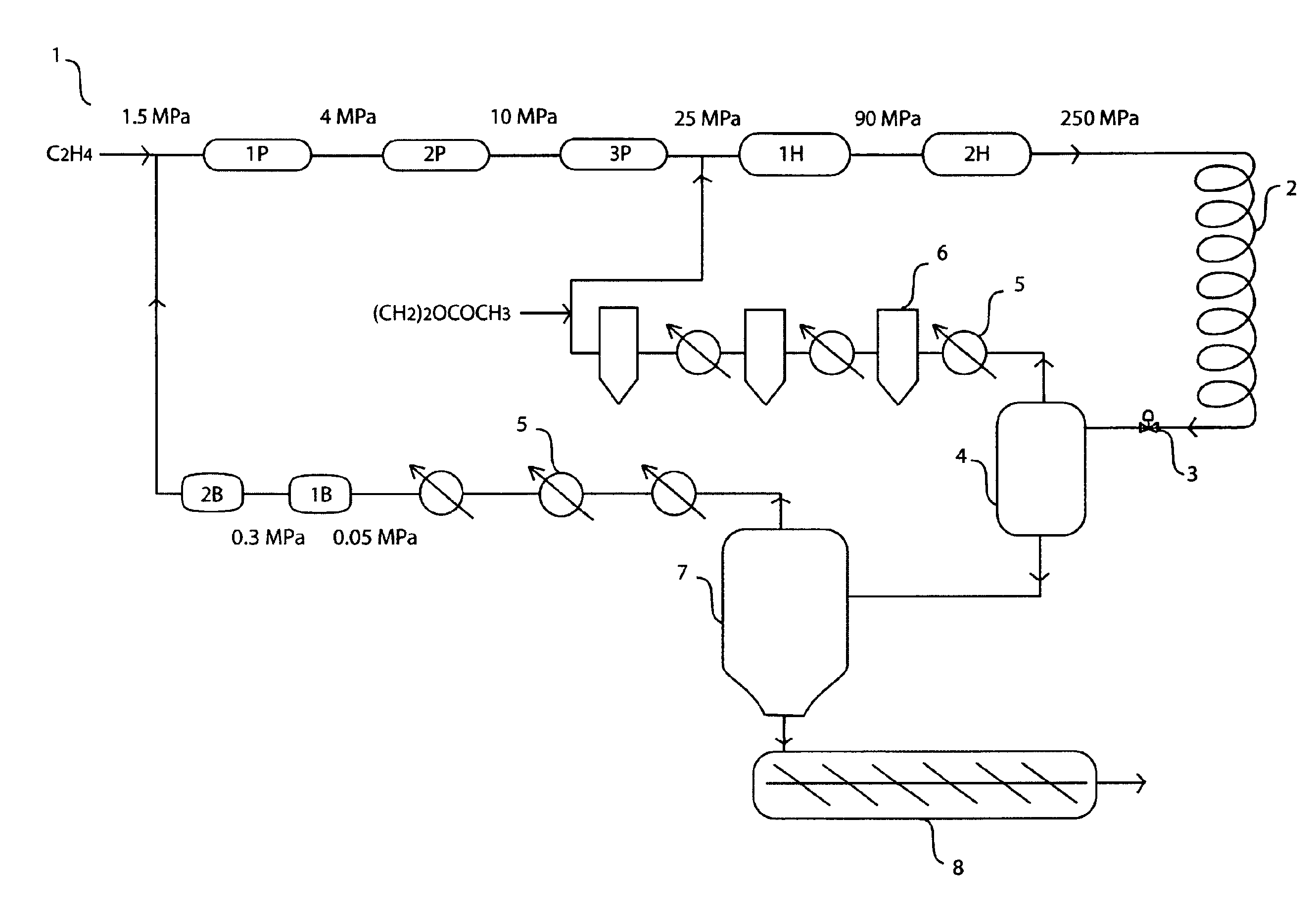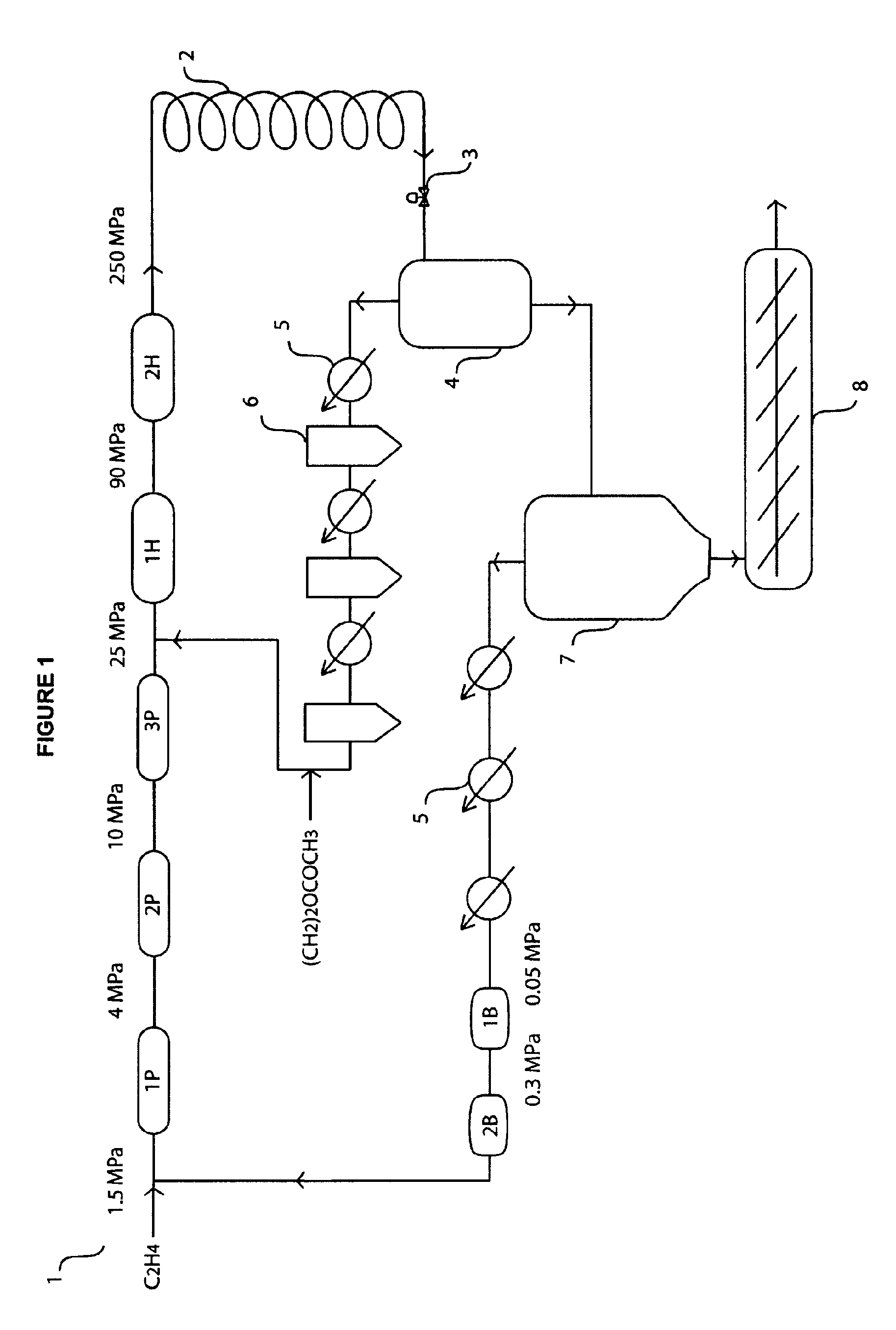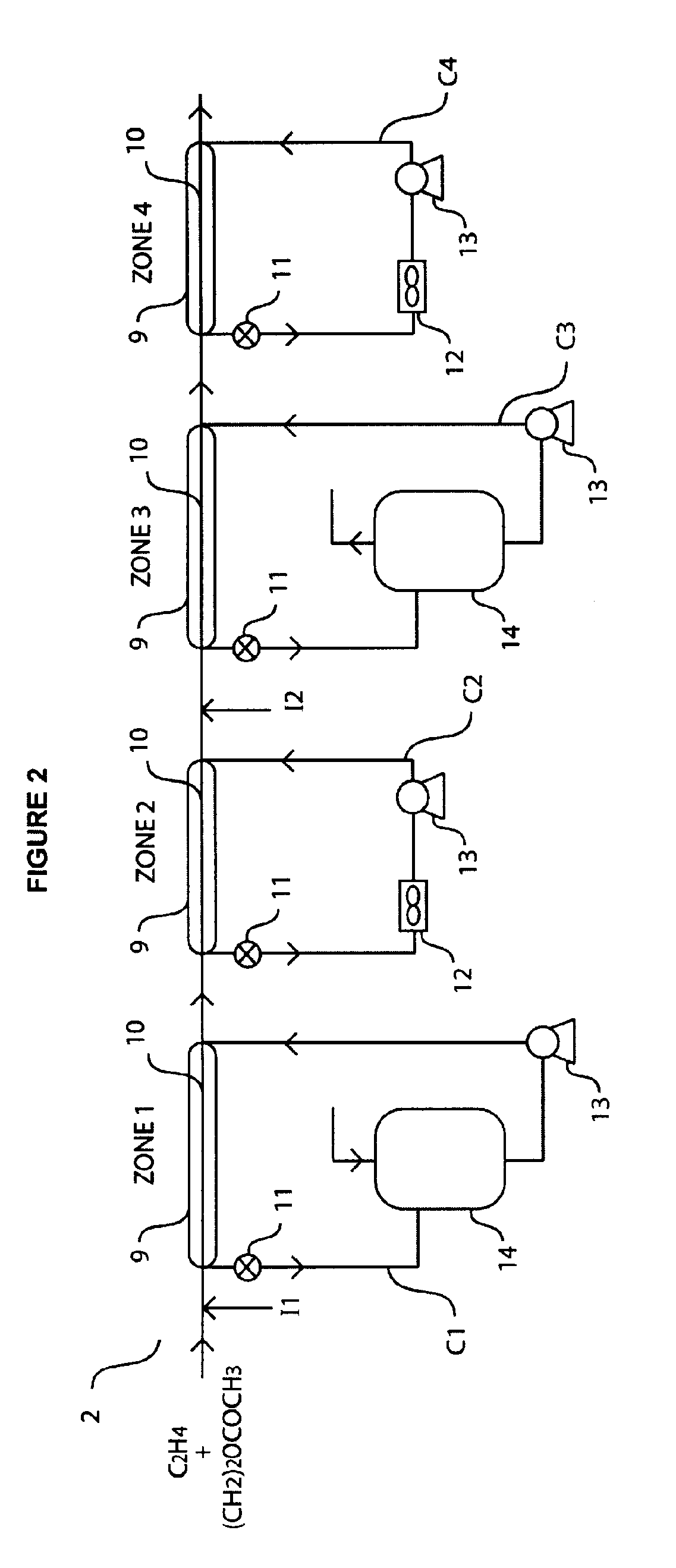Method of operating a high pressure ethylene polymerisation unit
a polymerisation unit and high-pressure technology, applied in the direction of supercritical condition processes, chemical/physical/physical-chemical processes, chemistry apparatuses and processes, etc., can solve the problems of minor leakage of reaction medium into the cooling jacket, thermal runaway, and care in order to control reaction temperatur
- Summary
- Abstract
- Description
- Claims
- Application Information
AI Technical Summary
Benefits of technology
Problems solved by technology
Method used
Image
Examples
Embodiment Construction
[0019]The person skilled in the art will appreciate that the invention can be applied to detecting leaks in any high pressure ethylene polymerisation unit comprising a tubular reactor made up of a plurality of interconnected double tubes. The polymerisation process is usually carried out under a pressure of at least 50, particularly of at least 100, 150, 200 or 250 MPa. The unit may further comprise a medium pressure recycle for recycling unreacted reactants also comprising a plurality of interconnected double tubes, wherein the contents to be recycled are under a pressure of at least 20 MPa, particularly of at least 25, 50, 100, 150, 200 or 250 MPa. In general, the higher the pressure in any section of the unit, the more useful the method of the invention will be, since the risk of a leakage increases with increasing pressure.
[0020]The double tubes, which are monitored for leakages, have a central tube and an outer enveloping tube. The medium to be treated, .e.g. to be polymerised ...
PUM
| Property | Measurement | Unit |
|---|---|---|
| pressure | aaaaa | aaaaa |
| pressure | aaaaa | aaaaa |
| temperatures | aaaaa | aaaaa |
Abstract
Description
Claims
Application Information
 Login to View More
Login to View More - R&D
- Intellectual Property
- Life Sciences
- Materials
- Tech Scout
- Unparalleled Data Quality
- Higher Quality Content
- 60% Fewer Hallucinations
Browse by: Latest US Patents, China's latest patents, Technical Efficacy Thesaurus, Application Domain, Technology Topic, Popular Technical Reports.
© 2025 PatSnap. All rights reserved.Legal|Privacy policy|Modern Slavery Act Transparency Statement|Sitemap|About US| Contact US: help@patsnap.com



